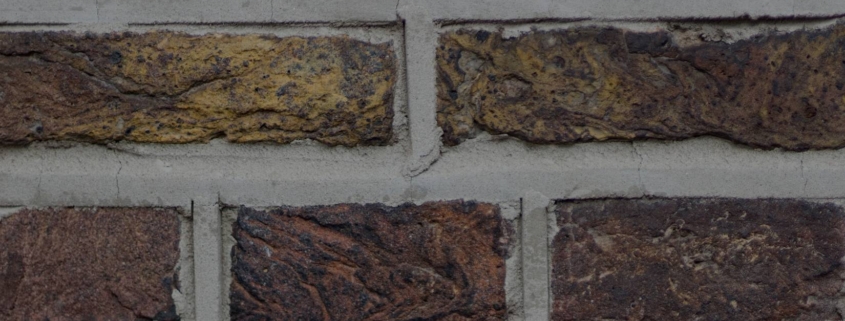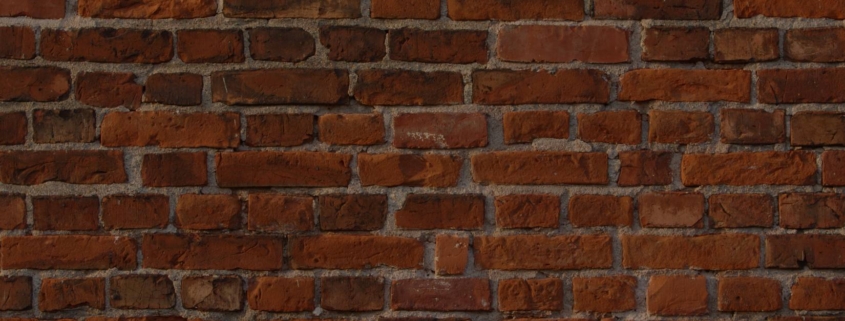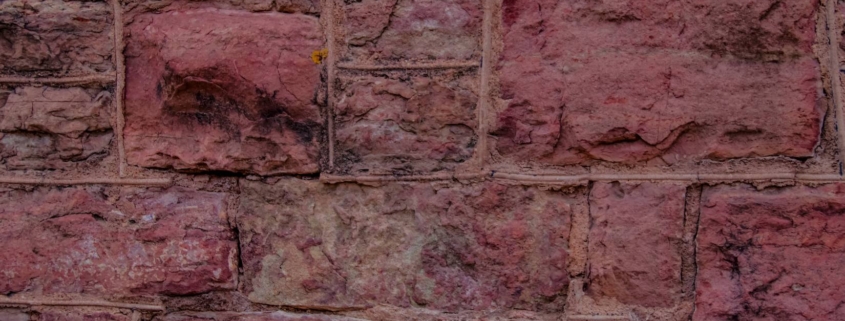If you own a property in Toronto, you’ve likely noticed the effects of time and weather on your brickwork. Tuckpointing is a vital maintenance process that not only enhances the structural integrity of your building but also boosts its aesthetic appeal. By carefully replacing deteriorating mortar between bricks, you can preserve the beauty of your home while ensuring it stands strong against the elements.
Ignoring the signs of wear and tear can lead to more significant issues down the road. Cracked or crumbling mortar, water damage, and visible gaps between bricks are all indicators that tuckpointing may be necessary. Understanding the process and benefits of tuckpointing can help you maintain your property’s value and charm, making it an essential topic for any homeowner in the bustling city of Toronto.
What Is Tuckpointing?
Tuckpointing is a masonry repair technique that involves the precise replacement of deteriorated mortar joints between bricks. This process restores the structural integrity of the building while enhancing its aesthetic appeal. By filling in cracks or gaps with new mortar, tuckpointing prevents moisture infiltration, which can lead to severe damage, including mold growth and foundation issues.
In Toronto, the need for tuckpointing often arises due to the region’s fluctuating weather conditions. Over time, freeze-thaw cycles can cause mortar to crack, making it crucial for property owners to address these issues promptly. Identifying signs of deterioration, like crumbling mortar or visible gaps, signals the necessity for immediate action. Tuckpointing not only prolongs the lifespan of masonry structures but also safeguards their value and overall appearance.
The tuckpointing process includes cleaning out the old mortar, applying new mortar, and finishing it to match the surrounding bricks. This attention to detail ensures a seamless look while providing effective protection for the masonry. When performed by skilled professionals, tuckpointing results in a durable repair that helps maintain your building’s charm and appeal.
Ultimately, investing in tuckpointing serves as a proactive measure against major repairs down the line. For businesses and property owners in Toronto, understanding the importance of maintaining mortar joints can avoid costly damages and sustain property values.
The Importance of Tuckpointing in Toronto
Tuckpointing plays a vital role in maintaining the structural integrity and appearance of buildings in Toronto. This masonry repair technique focuses on restoring the mortar joints between bricks, which is essential for preventing significant damage.
Benefits of Tuckpointing
Tuckpointing extends the lifespan of a structure. By replacing deteriorated mortar joints, you prevent water intrusion that can lead to mold growth. Tuckpointing also enhances the aesthetic appeal of your property, providing a unified and polished look. Investing in tuckpointing contributes to higher property values, making it an essential maintenance task for business owners in the competitive Toronto market.
Risks of Neglecting Tuckpointing
Neglecting tuckpointing increases the risks of structural damage. Cracked mortar joints allow water to penetrate walls, which can lead to issues like mildew or rust. This deterioration can escalate repair costs significantly if left unaddressed. You also face potential safety hazards, as weakened structures may lead to collapses. By ignoring tuckpointing, you compromise the safety, value, and longevity of your property.
How Tuckpointing Works
Tuckpointing is essential for maintaining the integrity and aesthetics of masonry. It involves precise techniques that restore deteriorated mortar joints, reinforcing structure and preventing future damage.
The Process Explained
The tuckpointing process begins with cleaning out existing mortar using specialized tools like chisels and grinders. After the old mortar’s removal, you apply new mortar into the joints, ensuring it bonds effectively with the surrounding bricks. Following that, finishing techniques match the color and texture of the original masonry, creating a seamless look. This meticulous approach not only enhances visual appeal but also strengthens the overall structure, prolonging the lifespan of your property.
Tools and Materials Used
Effective tuckpointing relies on specific tools and materials. You’ll need trowels to apply mortar, chisels for joint preparation, and grinders for cleaning. High-quality mortar mixes tailored for your masonry type guarantee durability. Additionally, tools like a pointing knife and a jointing tool aid in shaping the mortar for a professional finish. Utilizing the right tools enhances the efficiency and effectiveness of your masonry repair efforts, ensuring optimal results.
Identifying the Need for Tuckpointing
Identifying the need for tuckpointing is essential for maintaining your property’s structural integrity and aesthetic appeal in Toronto.
Signs That Your Home Requires Tuckpointing
Look for cracks or crumbling in mortar joints, which indicate potential weaknesses in the masonry. Discoloration or moisture stains on interior walls or ceilings also signal issues with water intrusion. If you notice visible gaps between bricks or mortar, immediate action is necessary. Additionally, rust stains from steel components can suggest that moisture is causing damage to the brickwork and that tuckpointing may be necessary.
Factors Influencing the Need for Tuckpointing
Age of your building affects the condition of mortar joints. Properties over 20 years old often experience more deterioration due to weather exposure and shifting foundations. Environmental factors, such as Toronto’s fluctuating temperatures and humidity levels, contribute to the deterioration of masonry. Quality of the original workmanship can influence longevity; poorly applied mortar may deteriorate faster. Regular maintenance and inspections can help identify tuckpointing needs before they lead to more extensive masonry repair.
Common Questions About Tuckpointing
What is tuckpointing?
Tuckpointing is the process of rejuvenating mortar joints in bricks through replacement of deteriorated mortar. It enhances the appearance of masonry and prevents structural issues that can arise from water intrusion.
Why is tuckpointing important for businesses?
Tuckpointing protects the structural integrity of your property, maintaining both safety and value. Neglect can lead to extensive masonry repair costs and possible disruptions to your business operations.
How often should tuckpointing be performed?
The need for tuckpointing can vary based on factors like building age and environmental exposure. Regular inspections every few years can help identify when tuckpointing is necessary.
What are the signs that indicate the need for tuckpointing?
Look for visible signs such as cracks in the mortar joints, crumbling or missing mortar, discoloration, and moisture stains. These signs often indicate underlying issues that require immediate attention to avoid further damage.
What materials and tools are used in the tuckpointing process?
Tools essential for tuckpointing include trowels, chisels, and grinders. High-quality mortar mixes that match the original masonry type are critical for effective repairs and ensuring durability.
Can tuckpointing increase property value?
Yes, tuckpointing not only improves aesthetic appeal but also enhances property longevity. Properties with well-maintained masonry often see higher market values and can attract potential buyers more easily.
Is tuckpointing a DIY project?
While small repairs may seem manageable, the tuckpointing process requires expertise to achieve optimal results. Professional masonry repair services ensure proper technique and lasting solutions for your structure.
How does Toronto’s climate affect tuckpointing needs?
Toronto’s climate, with its extremes in temperature and moisture levels, can accelerate mortar degradation. Regular maintenance through tuckpointing prevents moisture infiltration and associated problems, safeguarding your investment.
Key Takeaways
- Definition of Tuckpointing: Tuckpointing is the masonry repair technique that involves replacing deteriorated mortar joints to enhance both structural integrity and aesthetic appeal of brick buildings.
- Importance for Toronto Properties: Given Toronto’s fluctuating weather conditions, regular tuckpointing is essential to prevent water damage and preserve the value of properties.
- Signs of Deterioration: Homeowners should be vigilant for signs such as cracked or crumbling mortar, visible gaps between bricks, and moisture stains, indicating the need for tuckpointing.
- Benefits of Tuckpointing: The process extends the lifespan of structures, prevents mold growth, and increases property values, making it a vital maintenance task for homeowners and businesses.
- Professional Expertise Recommended: While minor repairs might seem feasible, hiring professionals ensures proper technique and effective long-term solutions for tuckpointing.
Conclusion
Tuckpointing is essential for preserving the beauty and strength of your property in Toronto. By addressing signs of deterioration early you can prevent more significant issues down the line. Regular maintenance not only safeguards your investment but also enhances curb appeal.
When you invest in professional tuckpointing services you’re ensuring that your building remains structurally sound and visually appealing. Don’t overlook the importance of this process; it’s a crucial step in maintaining your property’s integrity and value. Make tuckpointing a priority and enjoy the benefits of a well-maintained home or business.
Frequently Asked Questions
What is tuckpointing and why is it important?
Tuckpointing is the process of repairing deteriorated mortar joints between bricks. It’s vital for maintaining a property’s structural integrity and aesthetic appeal, especially in Toronto’s diverse weather, preventing water damage and mold growth.
How can I tell if my property needs tuckpointing?
Signs that indicate the need for tuckpointing include visible cracks, crumbling mortar, discoloration, or moisture stains on the walls. Regular inspections can help identify these issues early to avoid more extensive damage.
What tools are required for tuckpointing?
Essential tools for tuckpointing include trowels, chisels, and grinders. Additionally, using high-quality mortar mixes suitable for your masonry type enhances the effectiveness of the repair process.
How does tuckpointing affect property value?
Proper tuckpointing not only enhances visual appeal but also strengthens the structure, ultimately increasing property value. Neglected tuckpointing can lead to structural damage, decreasing the property’s worth.
Is tuckpointing a DIY project or should I hire a pro?
While some homeowners may attempt DIY tuckpointing, hiring a professional mason is often recommended for the best results. Professionals ensure high-quality repairs and can handle complex issues efficiently.
How does Toronto’s climate affect tuckpointing needs?
Toronto’s varying weather conditions, including freezing winters and hot summers, can accelerate wear on mortar joints. Regular tuckpointing is crucial to prevent water intrusion and maintain the integrity of masonry structures.




